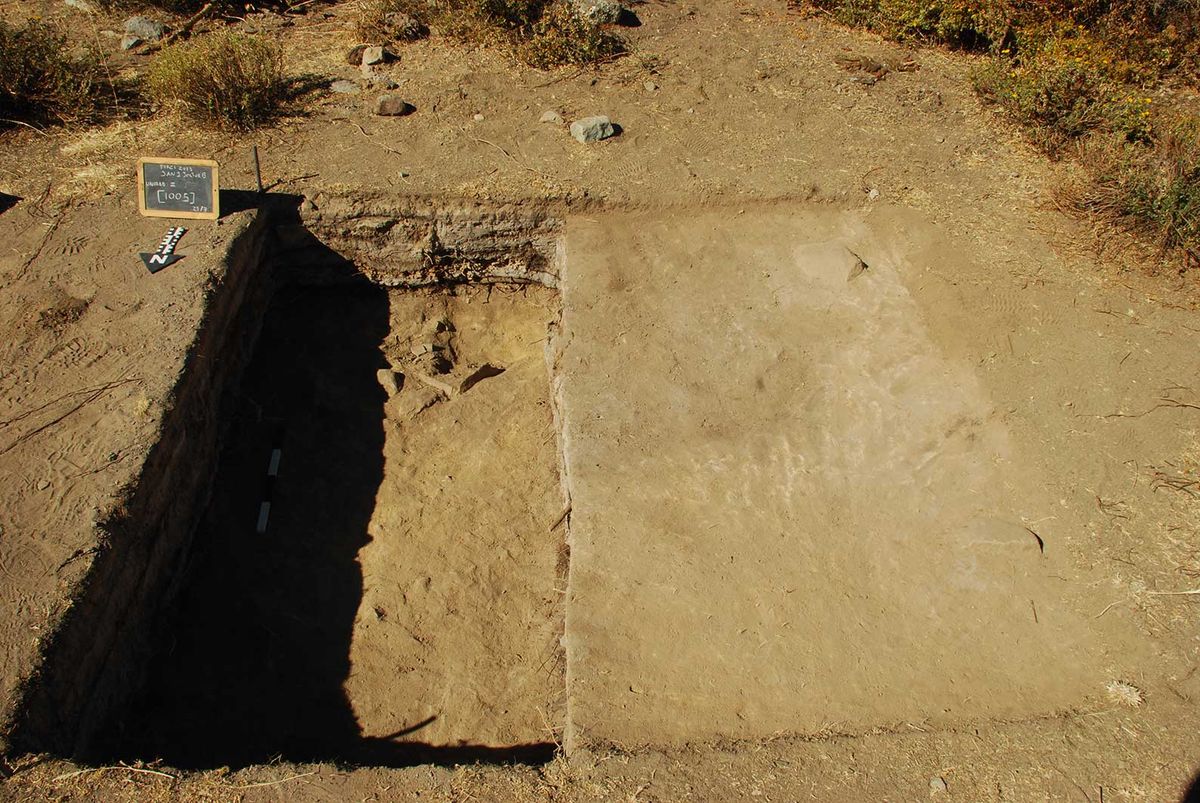An ancient “sounding” dance floor, perhaps designed to create a drum-like sound for a thunder god when stomped on, has been identified by archaeologists in Peru. Found at the site of Viejo Sangayaico, 200km southeast of Lima, the floor was built into an open-air platform sometime between AD1000 and AD1400. It then continued in use under Inca rule, from 1400 to 1532, and perhaps during the early years of the Spanish conquest.
“We know that in pre-Hispanic Andean rituals dance was a big part of the proceedings. I believe that this specially constructed platform was built to enhance the natural sounds associated with dance,” says Kevin Lane, an archaeologist with the Instituto de las Culturas (IDECU) of the Universidad de Buenos Aires in Argentina, who led the research. Funded by the Gerda Henkel Foundation, the project’s findings have recently been published in the Journal of Anthropological Archaeology.
The dance floor was built on one of two open-air platforms close to a possible Inca temple dedicated to a lightning deity. The platforms face the nearby mountain of Huinchocruz, where a pre-Hispanic ceremonial platform known as an ushnu stood. “I believe that these open platforms would have been used during the pre-Hispanic period as a stage on which to venerate the nearby mountain gods, in this case those of Huinchocruz,” Lane says.
Because lightning deities were associated with rain and thunder in Andean belief, it is possible that the people of Viejo Sangayaico used the dance floor to imitate the sound of thunder, Lane explains. “This would likely have been accompanied by drums and possibly Andean wind instruments.”
The archaeologists first identified the sounding dance floor when they heard a hollow noise as they walked on it. “We realised that the platform was built to enhance sound when we started excavating it,” Lane says. “We discovered that the platform had been dug and then infilled with specially prepared fills and surfaces to create a percussion effect. This involved four layers of camelid guano interspersed with four layers of clean silty clay.”
Lane says the dung layers contained small gaps which caused a deep, bass-like sound to be produced whenever people danced or stomped on the floor’s surface, which was around 10 metres in diameter.
“We reckon the platform could have held up to 26 people dancing in unison, making for a loud thumping sound,” Lane says, adding that the dust raised by the dancing may have been a visual feature.
The discovery raises the possibility that parts of other Andean sites may have been built to enhance sound. “We already knew this from sites like Chavin, but even during the late pre-Hispanic period it is possible that many sites had sectors specially prepared for this,” Lane says. Another Andean site in Peru where the use of sound has recently been studied is Huánuco Pampa.
“The sounding dance platform is a fantastic find and it shows that, aside from instruments, the human body and the landscape could be employed musically,” Lane says. “It also brings past sounds to life, especially given that the past is mostly silent and lost to us.”


